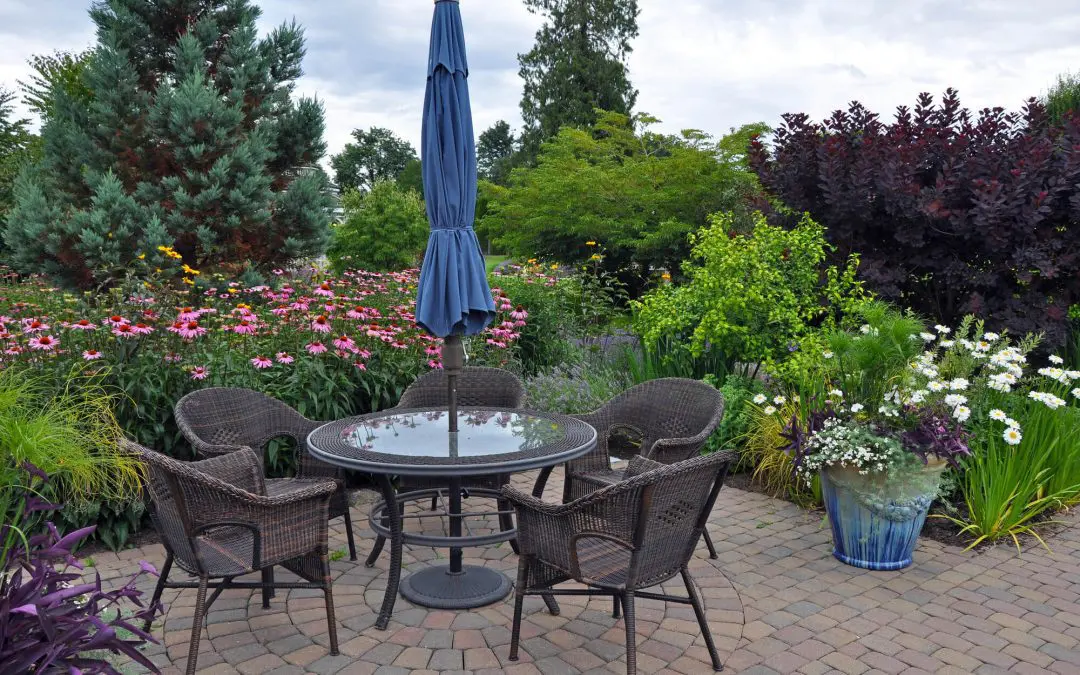Hardscaping is an excellent investment in enhancing your home’s beauty, functionality, and value. Unlike regular landscaping options, which involve plants, trees, and other organic materials, hardscaping incorporates non-living elements such as stone, concrete, wood, and metal. Here are some compelling benefits of hardscaping to consider before your next project.
Benefits of Hardscaping: Increased Property Value
One of the most significant benefits of hardscaping is the increase in property value it can provide. Well-designed and professionally installed hardscape elements can make your home more attractive to potential buyers. Features such as stone pathways, stylish patios, and functional retaining walls add a sense of sophistication and permanence to your landscape, making your property stand out in the real estate market.
Maintenance Benefits of Hardscaping
Hardscaping elements are relatively low-maintenance, unlike lawns and gardens, which require regular watering, mowing, pruning, and fertilizing. Once installed, features like pavers, stone walls, and decks require minimal upkeep, saving you time, effort, and money in the long run. This makes hardscaping an excellent choice for busy homeowners or those who prefer a low-maintenance outdoor space.
Enhanced Usability
Hardscaping can significantly enhance the usability of your outdoor areas. By creating defined spaces for activities such as dining, entertaining, or relaxing, hardscaping transforms your yard into an extension of your home. Patios, decks, and outdoor kitchens provide comfortable gathering areas, while walkways and steps improve accessibility and safety throughout your property.
Improved Drainage and Erosion Control
Properly designed hardscaping features can help manage water flow and prevent erosion on your property. Retaining walls, for example, can hold back soil and create terraced levels, reducing the risk of erosion on sloped areas. Permeable pavers and strategically placed drainage systems can direct water away from your home’s foundation, preventing water damage and ensuring a healthier landscape.
Aesthetic Benefits of Hardscaping
Hardscaping adds structure and visual interest to your outdoor space. The variety of materials, colors, and textures available allows you to create a customized look that complements your home’s architecture and style. Whether you prefer the rustic charm of natural stone, the sleek lines of concrete, or the warmth of wood, hardscaping can enhance the aesthetic appeal of your landscape.
Extended Living Space
Hardscaping effectively extends your living space beyond the walls of your home. An outdoor patio or deck becomes an additional room to enjoy meals, host parties, or simply relax with a book. Features like fire pits or outdoor fireplaces provide warmth and ambiance, making outdoor spaces usable even during cooler months.
Environmental Benefits of Hardscaping
Hardscaping can also offer environmental benefits. For instance, using permeable pavers allows rainwater to seep through the ground, reducing runoff and promoting groundwater recharge. Additionally, well-placed hardscape elements can reduce the need for extensive lawn areas, decreasing water consumption and the use of chemical fertilizers and pesticides.
Incorporating hardscaping into your landscape design can transform your outdoor space into a functional, attractive, and low-maintenance area that enhances your lifestyle and property value. Whether you are looking to create a peaceful retreat, a lively entertainment area, or simply improve your yard’s aesthetics and functionality, hardscaping offers many benefits for homeowners. Invest in quality hardscaping features and enjoy the long-term rewards of a beautiful and practical outdoor environment.
FAQs
Can hardscaping be DIY, or should I hire a professional?
While some hardscaping projects, such as small garden paths or simple patios, can be done yourself, larger or more complex projects, like retaining walls or multi-level patios, require professional expertise for proper installation and durability.
How much does hardscaping typically cost?
Costs can vary greatly depending on the materials used, the size and complexity of the project, and labor costs. Simple projects like a small patio may cost a few hundred dollars, while extensive hardscaping involving multiple features can run into the thousands.
How do I maintain my hardscaping features?
The materials used will determine the maintenance requirements. Regular cleaning, sealing (for materials like pavers and wood), and inspecting for damage or wear can help keep your hardscape elements in good condition.
How do I choose the right materials for my hardscaping project?
Consider factors such as the style of your home, the function of the hardscape feature, your budget, and the climate in your area. For example, natural stone may offer a rustic look, while concrete provides a modern aesthetic.
HomeSpec offers inspection services to homebuyers and sellers in North Mississippi and Southwest Tennessee. Contact us to request an appointment.

